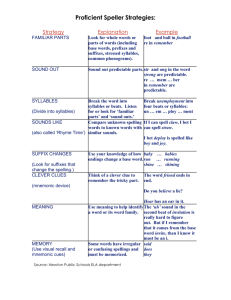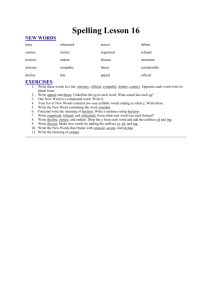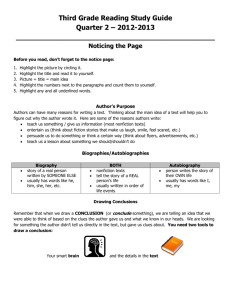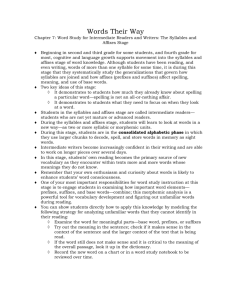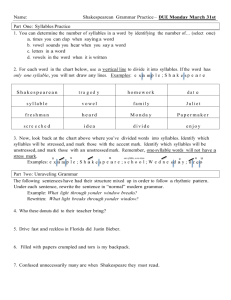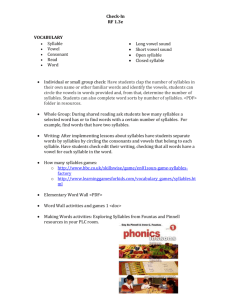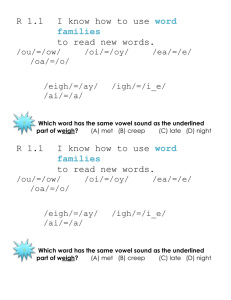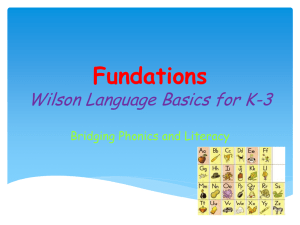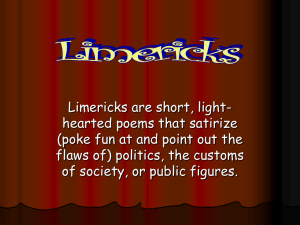wordwall activities
advertisement
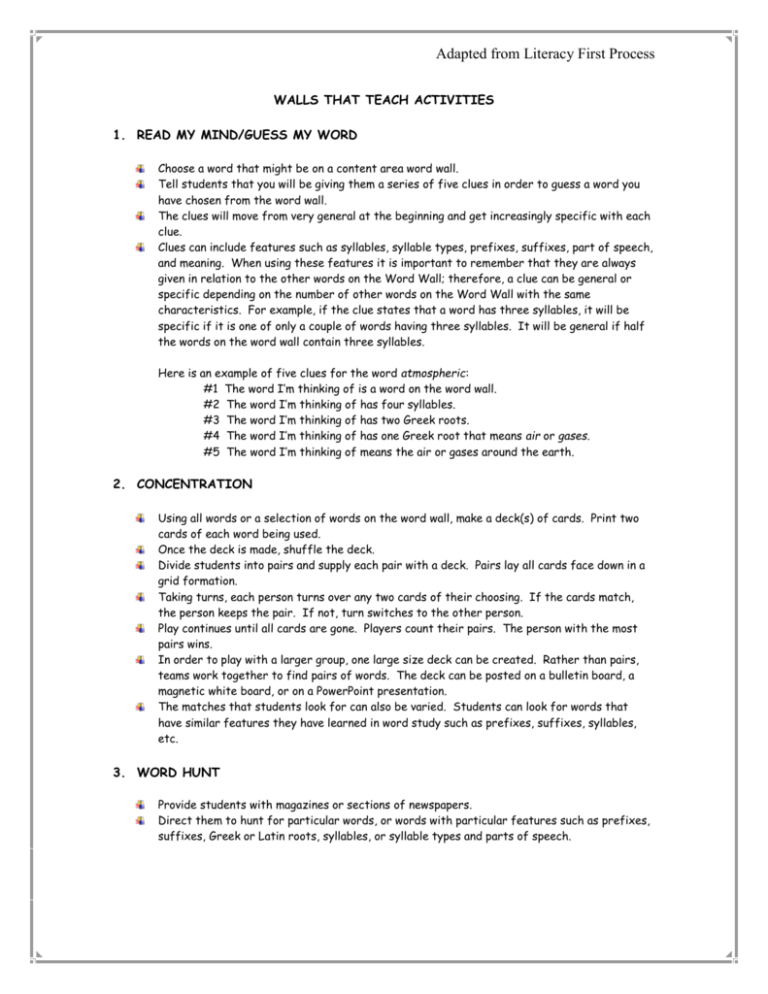
Adapted from Literacy First Process WALLS THAT TEACH ACTIVITIES 1. READ MY MIND/GUESS MY WORD Choose a word that might be on a content area word wall. Tell students that you will be giving them a series of five clues in order to guess a word you have chosen from the word wall. The clues will move from very general at the beginning and get increasingly specific with each clue. Clues can include features such as syllables, syllable types, prefixes, suffixes, part of speech, and meaning. When using these features it is important to remember that they are always given in relation to the other words on the Word Wall; therefore, a clue can be general or specific depending on the number of other words on the Word Wall with the same characteristics. For example, if the clue states that a word has three syllables, it will be specific if it is one of only a couple of words having three syllables. It will be general if half the words on the word wall contain three syllables. Here is an example of five clues for the word atmospheric: #1 The word I’m thinking of is a word on the word wall. #2 The word I’m thinking of has four syllables. #3 The word I’m thinking of has two Greek roots. #4 The word I’m thinking of has one Greek root that means air or gases. #5 The word I’m thinking of means the air or gases around the earth. 2. CONCENTRATION Using all words or a selection of words on the word wall, make a deck(s) of cards. Print two cards of each word being used. Once the deck is made, shuffle the deck. Divide students into pairs and supply each pair with a deck. Pairs lay all cards face down in a grid formation. Taking turns, each person turns over any two cards of their choosing. If the cards match, the person keeps the pair. If not, turn switches to the other person. Play continues until all cards are gone. Players count their pairs. The person with the most pairs wins. In order to play with a larger group, one large size deck can be created. Rather than pairs, teams work together to find pairs of words. The deck can be posted on a bulletin board, a magnetic white board, or on a PowerPoint presentation. The matches that students look for can also be varied. Students can look for words that have similar features they have learned in word study such as prefixes, suffixes, syllables, etc. 3. WORD HUNT Provide students with magazines or sections of newspapers. Direct them to hunt for particular words, or words with particular features such as prefixes, suffixes, Greek or Latin roots, syllables, or syllable types and parts of speech. Adapted from Literacy First Process 4. FLY SWATTER REVIEW Arm two students with a flyswatter and mark a starting point 6-8 feet from the word wall. Call out a definition or a spelling feature depending on your focus. Students run to the word wall and the first to swat the correct word wins. 5. VOCABULARY DANCE Assign consonants and vowels with a different dance move. For example, for each consonant, students must move hips left or right and wave their arms; for each vowel, kick left or right and show jazz hands. Choose a word from the word wall and, together, spell them aloud and perform coordinated moves. It is recommended that moves and words be chosen and practiced ahead of time so that model runs smoothly. 6. HUMAN SCRABBLE Divide students up into teams. Provide each person on each team with all the letters necessary to make one or more of the words on the word wall. The letters should be printed one to a sheet and large enough for the room to see. At your signal, each team spells as many words as they can with the letters they have been given. Teams must organize themselves physically to spell as many words as possible. Teams are awarded points for the words they spell based on the number of letters used. Ultimately, they want to try to spell a word that uses all the letters. This word will be the word wall word. 7. PARTNER QUIZ Divide students into pairs. Pairs quiz one another on the definitions of the word wall words. 8. WORDO Using a Wordo template, ask students to choose one of the words from the word wall for each blank on their Wordo card. Either call out definitions or word features. If a participant has a word that corresponds with the definition or word feature called, they cross it off. The game can be played like standard BINGO or any variation. 9. DEFINITION SCRAMBLE Students are given either a word from the word wall or a definition. Students walk around the room reading words or definitions until they find the owner of their corresponding word or definition.
